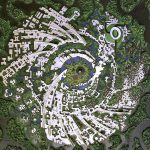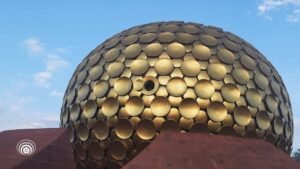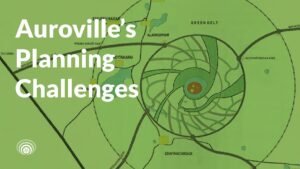June 13, 2022
To Whom It May Concern:
Roger Anger’s Auroville Model
Architect Roger Anger’s model for the experimental township of Auroville is a unique architectural
artifact of both high artistic merit and historical significance. It is an extremely elaborate, expressive
object that clearly communicates Auroville’s bold urban form and its relationship with the landscape,
as imagined by Anger and the Mother, Mirra Alfassa – a quality that is particularly difficult to express
at the level of the city. While architectural models are often thought of as mere tools for representing
spatial ideas, they are also significant tools for architects themselves to visualize, evaluate, and
refine their ideas in physical form. Anger’s model for the township of Auroville, in particular, helped
not only visualize but also determine the widely celebrated “galaxy” plan of this new experimental
society near Pondicherry. As such, it is a stunning artifact representing and embodying an equally
stunning urban and societal vision.
Thanks to the generosity and the unwavering support of the Auroville Town Development Council
(ATDC), the Auroville model is currently on view at The Museum of Modern Art (MoMA) as part of the
exhibition The Project of Independence: Architectures of Decolonization in South Asia, 1947–1985
(February 20-July 2, 2022). This exhibition is the first of its kind to showcase the Subcontinent’s
extraordinary architectural production in the post-Independence period in a transnational way. The
Auroville model constitutes one of the anchor pieces of the exhibition’s opening section, “New
Cities,” which explores the design and construction of new and innovative urban visions for life in
South Asia after Independence. Most importantly, this unique artifact is the only architectural model
presented in this entire section.
MoMA performs conservation work for objects it deems to be of highest historical and artistic value –
an honor usually reserved for objects in MoMA’s permanent collection. The Auroville model was a
rare instance in which an object on loan was assessed as worthy of reconditioning treatment from
our world-class team of conservators. In order to present the model in the best possible light to our
audiences, and with approval of the ATDC, our colleagues in the Department of Sculpture
Conservation performed 40 hours of treatment on the model – removing dust and impurities that had
accumulated over the decades, repairing the perimeter of the base so as to aesthetically present a
uniformly painted edge, and repairing a slightly disfigured building in the center of the model
where the pressure of the deforming and scratched acrylic that originally covered the model had
resulted in damage over time. Upon the completion of this restoration project, the Auroville model
was mounted in a dedicated pedestal in MoMA’s galleries and covered with a custom-fabricated
bonnet so that the power of the Mother’s and Anger’s urban vision for Auroville could be
communicated to exhibition visitors with the utmost immediacy.
The model has been displayed to resounding success and is one of the main attractions of the
exhibition. Many visitors – professionals and general audience members alike – have commented on
the extraordinary architectural merits and beauty of this object. For these reasons, the Department
of Architecture and Design earnestly hopes to include the model in MoMA’s collection, which will
allow curators to exhibit it in a number of different contexts and changing displays going forward.
I am pleased to attach to this letter a number of photographs documenting the presence of Roger
Anger’s model in the current exhibition.
Sincerely,
Martino Stierli
The Philip Johnson Chief Curator of Architecture and Design
New York, NY 10019





